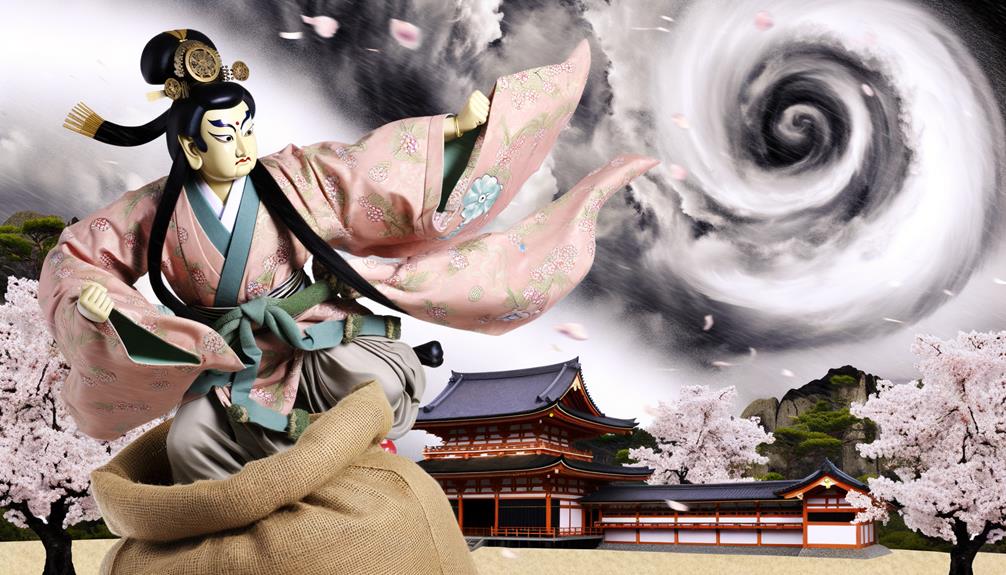Have you ever heard about Fujin, the wind god in Japanese mythology? This deity is one of the oldest in the Shinto religion, even older than Buddhism in Japan. Fujin is usually shown as a wild, green-skinned figure that looks a bit like an ogre. He's always carrying a bag of winds, which is a very symbolic part of Japanese culture's depiction of nature.
Over time, how we understand Fujin has changed. His image reflects a mix of fear, respect, and the unpredictability of nature. There's an interesting story about how Fujin came to be. He also has a relationship with his brother, Raijin, the god of lightning, thunder, and storms, which adds more to his character.
Come along as I unravel the captivating stories and meanings hidden within Fujin's windswept appearance. Let's see how this mighty god is still very much alive in modern Japanese culture and even in other parts of the world.
Fujin's Role in Japanese Mythology

Let's chat about Fujin, a fascinating deity in Japanese mythology. He's quite a character – a god of the air and wind, often shown carrying a bag of wind, his fingers standing for the cardinal directions. He had quite an unconventional birth, too, emerging from the body of Izanami in the underworld. Fujin and his brother Raijin, the Japanese Lightning God, are the children of Izanagi and Izanami, the power couple that created the world of Japanese folklore.
Fujin is a sight to behold, with his red-white hair, green skin, and a face that resembles an oni, a kind of supernatural creature in Japan. His disheveled look mirrors the chaotic wind he rules over. Fujin is the one who whips up typhoons, linking him to wild weather. But that's not all – he also guards Japan against foreign dangers, which places him in a gray area, neither good nor bad.
Fujin's image holds a profound place in Japanese culture. The wind's might in Japanese mythology, brought to life through Fujin, can be seen across different forms of media, showcasing his enduring relevance. As a highly respected deity in Japan, Fujin's role in its mythology symbolizes the raw power of the elements and the equilibrium of nature.
The Iconography of Fujin
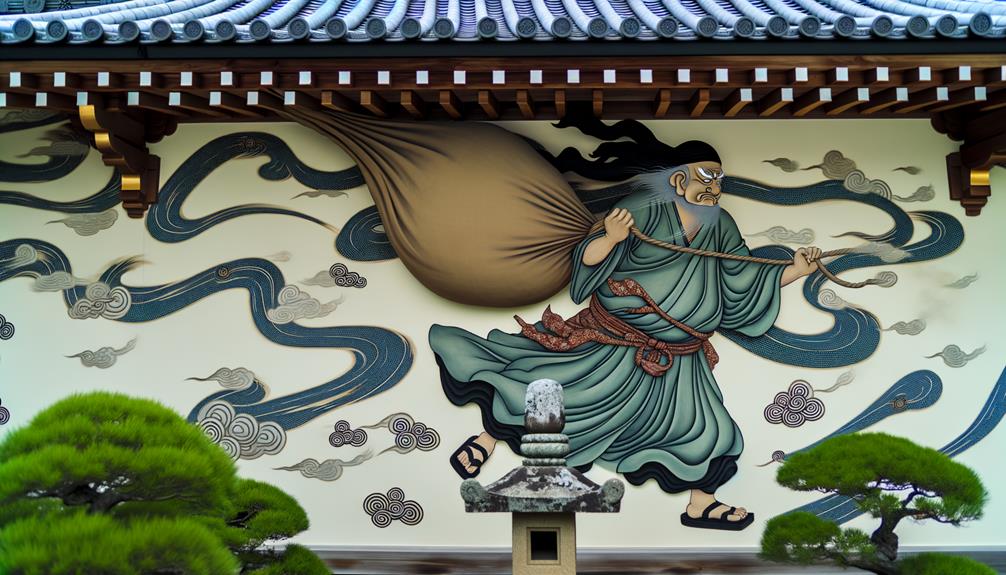
Taking a look at the visual representation of Fujin, an interesting mix of traits is observed. These characteristics don't just identify him as a deity of wind, but also encapsulate his contradictory role in the tales of Japanese mythology. Fujin and Raijin, the god of thunder, are often seen together in Japanese art, symbolizing the ever-changing forces of nature.
Fujin, who is seen as the god of the wind, is commonly shown as an oni. This is a kind of ogre in Japanese stories, with green skin, untamed hair, and four fingers on each hand. These four fingers stand for the four main directions, highlighting Fujin's control over all winds. His green skin is an indication of his connection with nature, a recurring theme in the creation myths of Japan.
One of the unique features of Fujin is that he always carries a large bag. This bag, filled with wind, represents his absolute control over this atmospheric element. It's his method of releasing strong winds or soothing breezes, demonstrating his dual role as both a chaotic and nurturing entity.
His connection with his sibling Raijin contributes more depth to his visual representation. While Raijin is associated with thunderstorms, Fujin is often seen coming in after, to clear the skies. This highlights their interconnected roles in preserving the balance of nature.
The Tale of Fujin's Birth
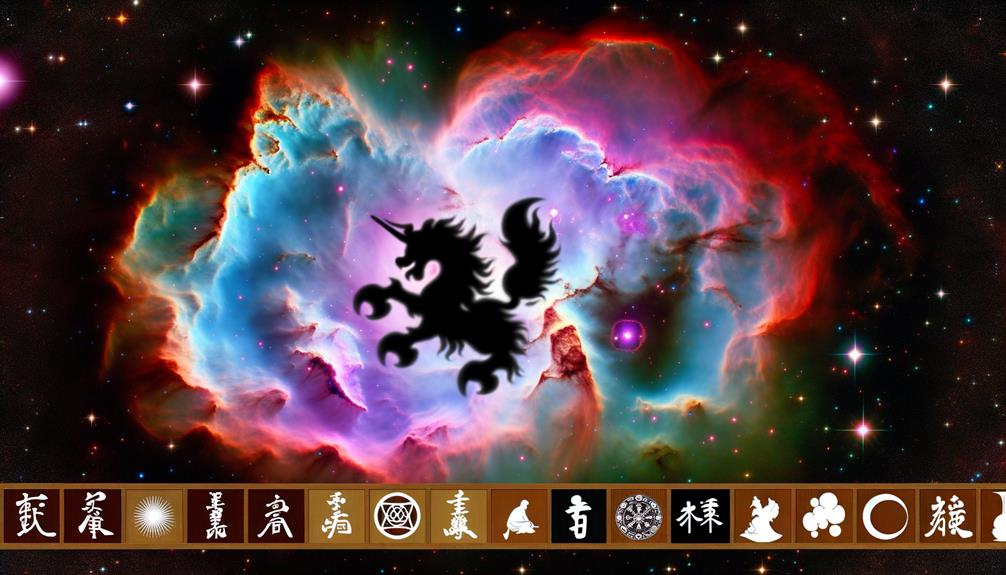
Let's dive into the history of Fujin, a fascinating figure from Japanese mythology. Fujin, known for his ability to control the winds, is a key character in ancient Japanese legends and his birth story adds another layer to his already multifaceted persona. Born from Izanami's anger, Fujin and his brother Raijin are among the earliest deities in Japanese folklore.
Izanami was Fujin and Raijin's mother. She gave birth to them in a fit of rage after feeling betrayed by her husband Izanagi's rejection. After her death, Izanami was represented as a terrifying decaying corpse, home to demons. This gruesome depiction only fueled her rage, leading to the birth of the wind god Fujin and his brother Raijin.
The story of their birth is a vital part of the mythology surrounding Fujin, the wind god. The pair managed to flee from the underworld by sneaking through a crevice in a rock after their father blocked the entrance to Yomi, the underworld.
Fujin, often shown with his wind bag, is thought to have acquired his wind-controlling abilities at this moment. He became a symbol of his mother's turbulent and destructive fury. This story offers a valuable perspective on Fujin's origins, deepening our comprehension of the symbolism and imagery linked with this ancient wind god.
Fujin in Contemporary Pop Culture
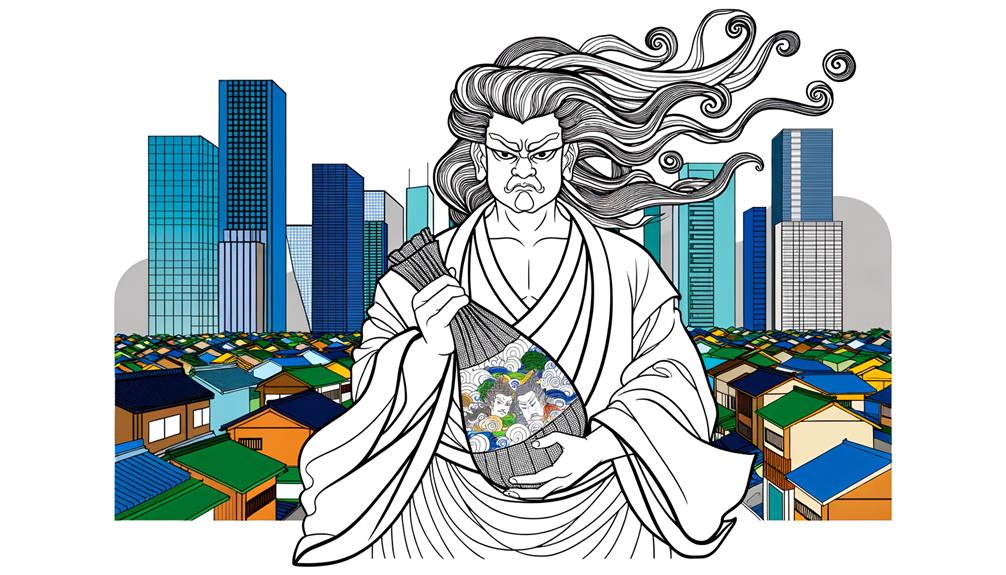
Let's dive into the world of contemporary pop culture, where Fujin, the character from ancient mythology, holds more sway than you might think. This wind god doesn't just belong to the past; he's become a staple in modern media, popping up in video games and cartoons.
You've probably come across him in games like Mortal Kombat and Final Fantasy VIII. He's not just hanging around in these games; he's exploring different worlds, much like Izanagi did in the Fujin wind god mythology.
| Medium | Fujin's Role |
|---|---|
| – | – |
| Video Games | Striking character |
| Cartoons | Emblem of culture |
| Other Media | Persistent presence |
You can also find him in the cartoon, Let's Go Luna!, where his cultural significance still shines. His command over wind and storms is reminiscent of the Greek wind god and the god of thunder, showing that his influence reaches much further than Japanese culture.
Fujin's traditional look – a little rough around the edges – still persists in his modern portrayal, drawing a line from his ancient origins to his current fame. This comparison between the past and now, the Greek god, and the Thunder God, emphasizes Fujin's lasting impact and recognition in today's pop culture.
Fujin and Raijin: A Comparison
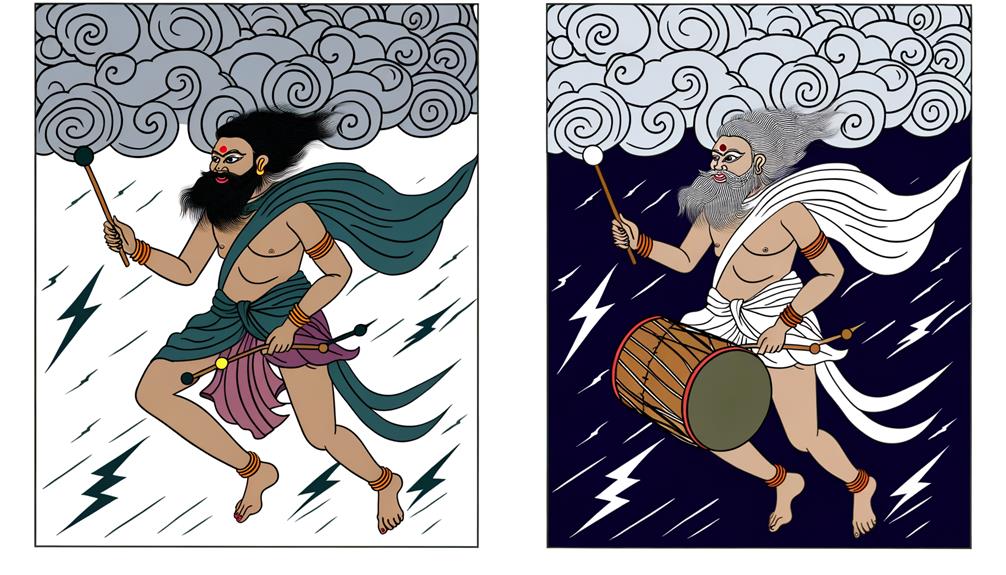
Let's chat about Fujin and Raijin, two intriguing figures from Japanese mythology. Both are powerful deities, born from the goddess Izanami. When it comes to popular culture, Fujin's impact is clear. But comparing him to Raijin sheds light on their unique origins and highlights their similarities as well as their differences.
Fujin and Raijin, often seen together in art, showcase the fusion of various cultures in Japanese mythology. Fujin, known as the wind god, has iconography that reflects Greek influences, specifically the god Boreas. On the other hand, Raijin, hailed as the god of thunder, offers a contrast to Fujin, yet their stories are closely linked. In fact, the tale of their birth is tied to Izanami's death and Izanagi's journey to Yomi, the underworld, to bring back his wife.
Let's talk about some of the ways they differ:
- Fujin's main attribute is a bag filled with wind, whereas Raijin carries a thunder hammer.
- Fujin shares similarities with the Greek god Boreas, but Raijin doesn't have a comparable foreign deity.
- They're associated with different directions: Fujin with the north, and Raijin with the east.
Despite these differences, they do share common themes in Japanese mythology. They represent the power of nature and the idea of dualism. Digging into the stories of these deities can really help us appreciate the richness of Japanese mythology and its ability to incorporate elements from various cultures.
Frequently Asked Questions
Who Is the God of Wind Fujin?
Sure, let's chat about Fujin, the wind god in Japanese mythology. He came into existence from the decomposing body of Izanami, and is often portrayed carrying a bag of wind. Remember, he's not just the god of the breeze, but also of storms, typhoons, and the four main compass points. This makes him a pretty significant figure in this cultural lore.
What Do Raijin and Fujin Symbolize?
From what I gather, Raijin and Fujin act as symbols for the natural forces of thunder and wind. People often view them as mighty gods who command these elements, reflecting the deep admiration and reverence our ancestors held for the strength of nature.
What Is the Weapon of Fujin God of Wind?
Have you ever wondered about the powerful tools that mythological gods carry? Well, let's chat about Fujin, the god of wind from Japanese folklore. His weapon of choice? A massive bag, of all things! This isn't just any old bag, though. It's a bag of wind, symbolizing his command over the elements. From soothing breezes to stormy gales, this bag gives Fujin the power to stir up all kinds of weather conditions.
What Is the Relationship Between Raijin and Fujin?
Raijin and Fujin, two figures woven into the intricate fabric of mythology, share an unshakable bond as brothers. They both sprang from the same divine source, their mother, and together, they managed to slip away from the clutches of the underworld. Their lives are now forever tangled in the complex maze of ancient tales.

